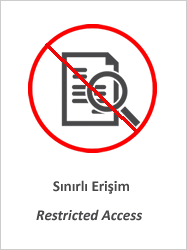The Use of Chinese Herbal Drugs in Islamic Medicine

View/
Access
info:eu-repo/semantics/embargoedAccessDate
2015Author
Heyadri, MojtabaHashempur, Mohammad Hashem
Ayati, Mohammad Hosein
Quintern, Detlev
Nimrouzi, Majid
Mosavat, Seyed Hamdollah
Metadata
Show full item recordCitation
HEYADRİ, Mojtaba, Mohammad Hashem HASHEMPUR, Mohammad Hosein AYATİ, Detlev QUİNTEM, Majid NİMROUZİ & Seyed Hamdollah MOSAVAT. “The Use of Chinese Herbal Drugs in Islamic Medicine”. Journal of Integrative Medicine, 13.6 (2015): 363-367.Abstract
This paper investigates some of the ways that Chinese medicine has been transferred to the Western
world and to Islamic territories. During the Golden Age of Islam (8th to 13th century CE), the herbal
drug trade promoted significant commercial and scientific exchange between China and the Muslim
world. Chinese herbal drugs have been described by medieval Muslim medical scholars such as Tabari
(870 CE), Rhazes (925 CE), Haly Abbas (982 CE), Avicenna (1037 CE) and Jurjani (1137 CE). The
term al-sin (the Arabic word for China) is used 46 times in Avicenna’s Canon of Medicine in reference to
herbal drugs imported from China. Cinnamon (dar sini; “Chinese herb”), wild ginger (asaron), rhubarb
(rivand-e sini), nutmeg (basbasa), incense tree wood (ood), cubeb (kababe) and sandalwood (sandal)
were the most frequently mentioned Chinese herbs in Islamic medical books. There are also multiple
similarities between the clinical uses of these herbs in both medical systems. It appears that Chinese
herbal drugs were a major component of the exchange of goods and knowledge between China and the
Islamic and later to the Western world amid this era.


















